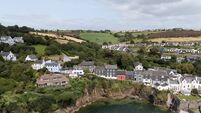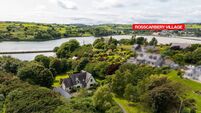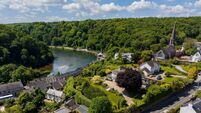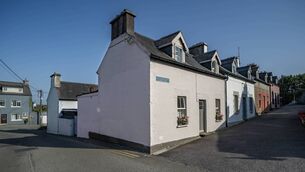HOUSE OF THE WEEK
IT is already 250 years old, but now there must be centuries more left still in Crosshaven House. One of the leading renovation/conservation jobs of the boom times, this grand seaside village house (and it is the very heart of the village) might today be shorn of its original acres of grounds and outbuildings, but the interiors and all of its gracious space are exemplary.
Crosshaven House was saved from declining fortunes and its decaying physical fabric during the early 2000s when it was bought by enterprising Dublin businessman Austin Cripps — who’d first spied it from a boat when sailing into Crosshaven.










